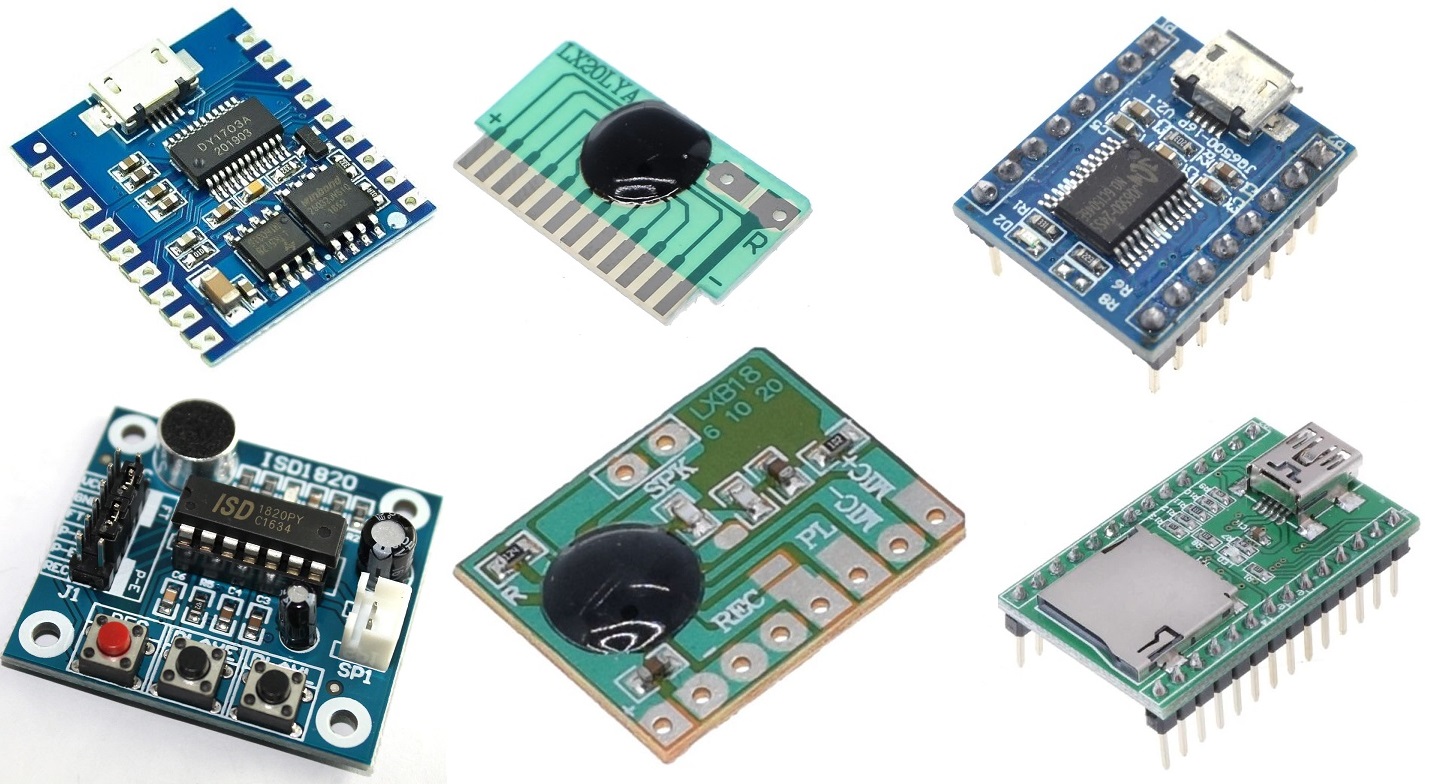Your cart is currently empty!
Choosing a soundboard/module for your project

So you want to add sound to your project
I’m working on a project to which I’m planning on adding sound effects. In the past I have used BigDawg Greetings sound boards, but this is a smaller project so space is limited. As such I started looking around and was surprised at the number of sound electronics available and the difference in size, capability and price!
So I decided to work out some of the key features of each one and compile a list so in future I don’t have to work so hard to find what I’m looking for. For the purposes of this article I’m limiting my selection to soundboards that don’t require a microcontroller to function. So no ‘shields’ or boards that function with another system (such as Spectacle). I’m also ignoring boards with functionality beyond sound (clocks, onboard processors, etc) and boards that come with pre-installed sounds only (sirens, music, etc).
CAUTION: These notes are based on what I was able to ascertain from reading (sometimes dodgy) descriptions of these products! I am not an electrical engineer nor have I tested them (yet).
Here are some questions to ponder before you choose your sound module.
How many sounds do I want to play?
A key thing to consider is how many sound effects you want to play. The modules I’ve found tend to play one sound or many. They also generally only play one sound at a time, meaning if one sound is playing and you activate another sound the first will stop and the second will start.
Depending on your budget you could probably get creative and use two cheap modules to play two sounds at once but that’s possibly more complicated and some of these modules are really cheap!
Do I need a microcontroller?
I’ve selected these modules specifically so you don’t need to interface with them using a microcontroller. While some of them do support microcontroller interfaces such as UART or I2C they can all be triggered with a simple switch. Some can only trigger one sound this way, but others have multiple triggers and sounds available. You can of course use extra hardware to trigger these with a microcontroller (such as a switch IC or opto-isolators) but I’ll leave that alone for now.
How will I record/store the sounds? What file format do I need?
These boards vary from having an on-board microphone (or mic input) to record sounds through to requiring an SD card with the files on them.
The boards that record their sound store the data internally and that can’t be accessed. The other boards use a mix of .mp3, .wav and .ogg file formats, stored in on-board USB accessible memory or an SD card.
Converting sound files from one format to another is relatively simple, and you can use free tools such as VLC or Audacity.
How loud do I need it?
Some of these devices come with a small speaker built in, others can run a small 0.5W speaker and others include an onboard amp and can power up to 5W speakers!
I suspect you’ll want the onboard amp if you’re using this in a crowded area or outside.
List of boards and product selector quiz
See the table below for a list of boards/modules and features I’ve found. To make choosing a sound board easier I’ve created a little set of questions to help narrow down your requirements.
[selectors slug=”soundboard-module-selector”]
Let me know how you go!
